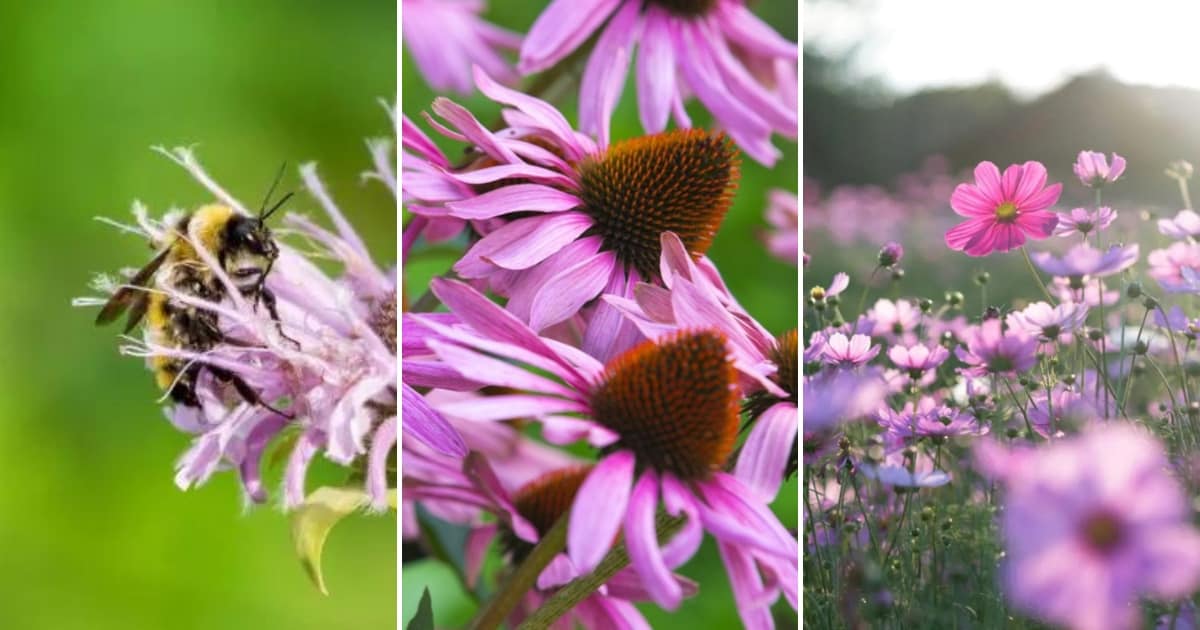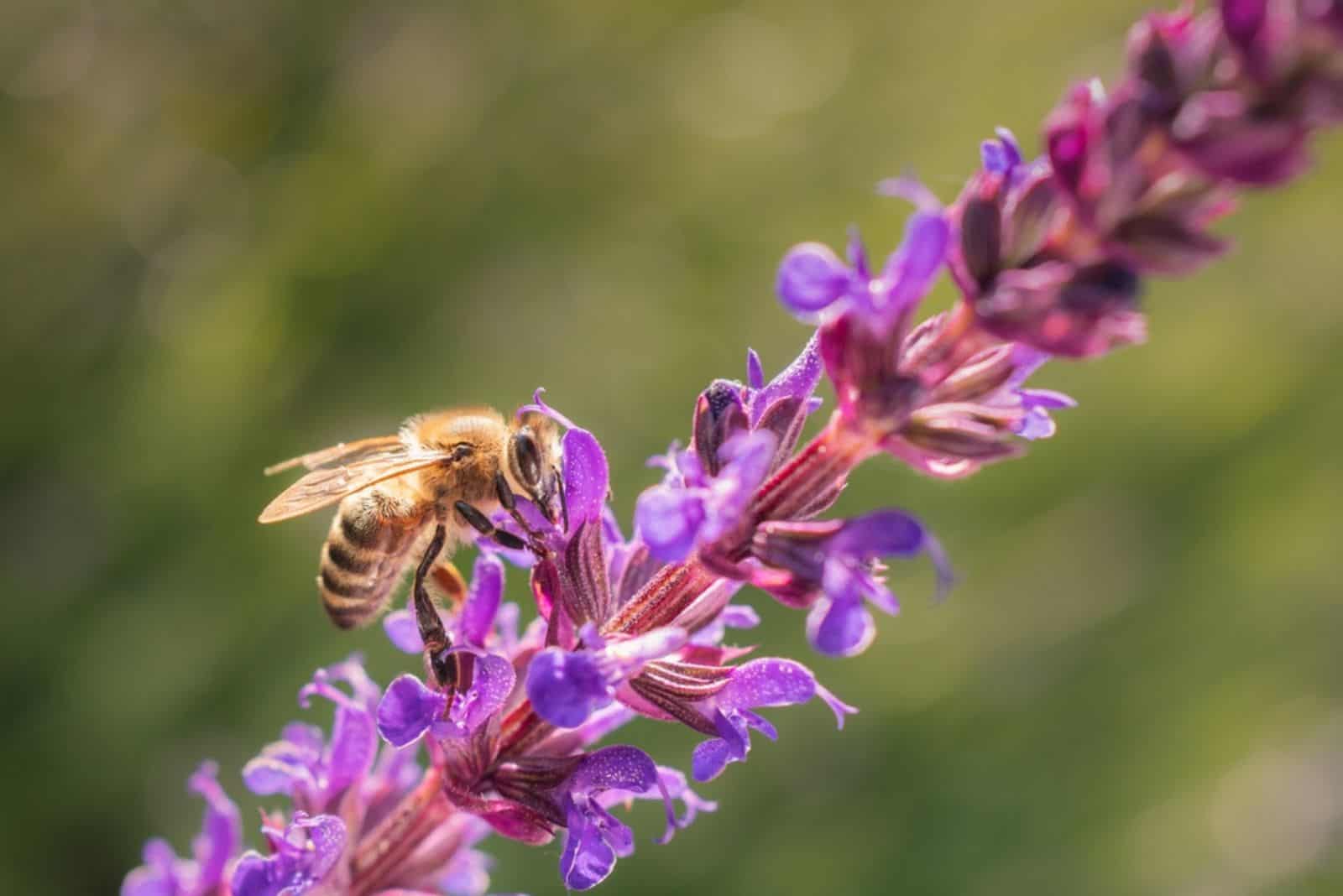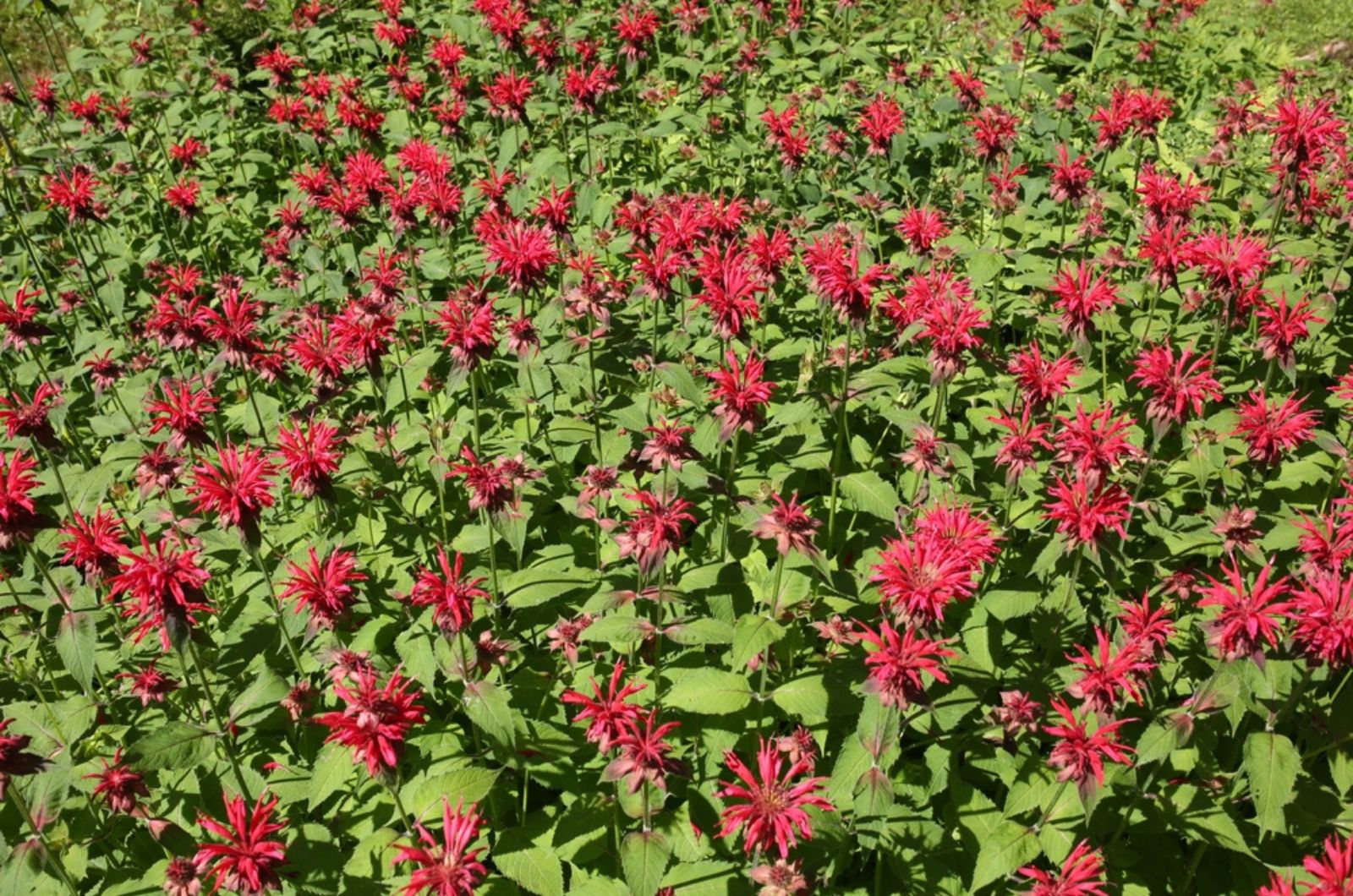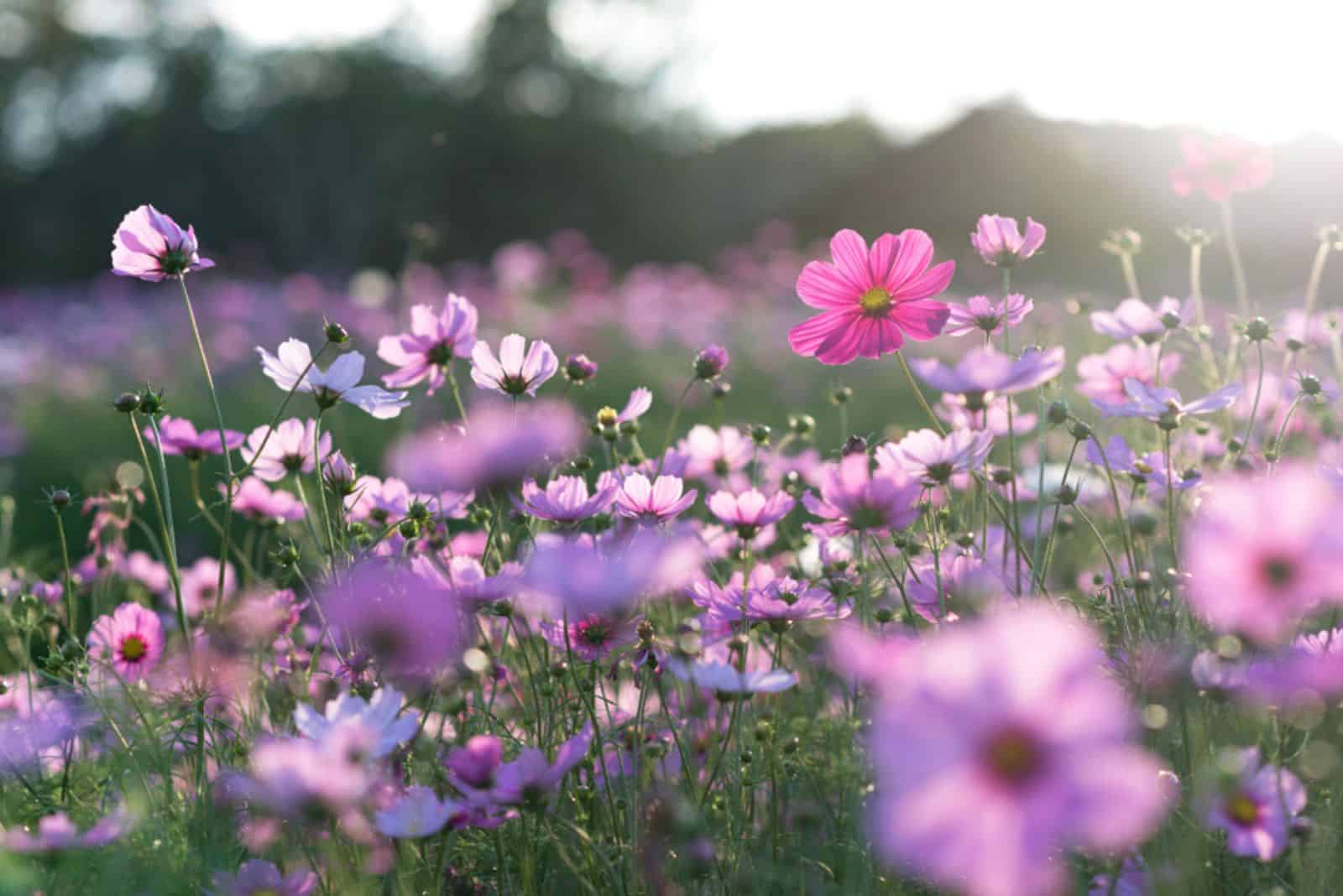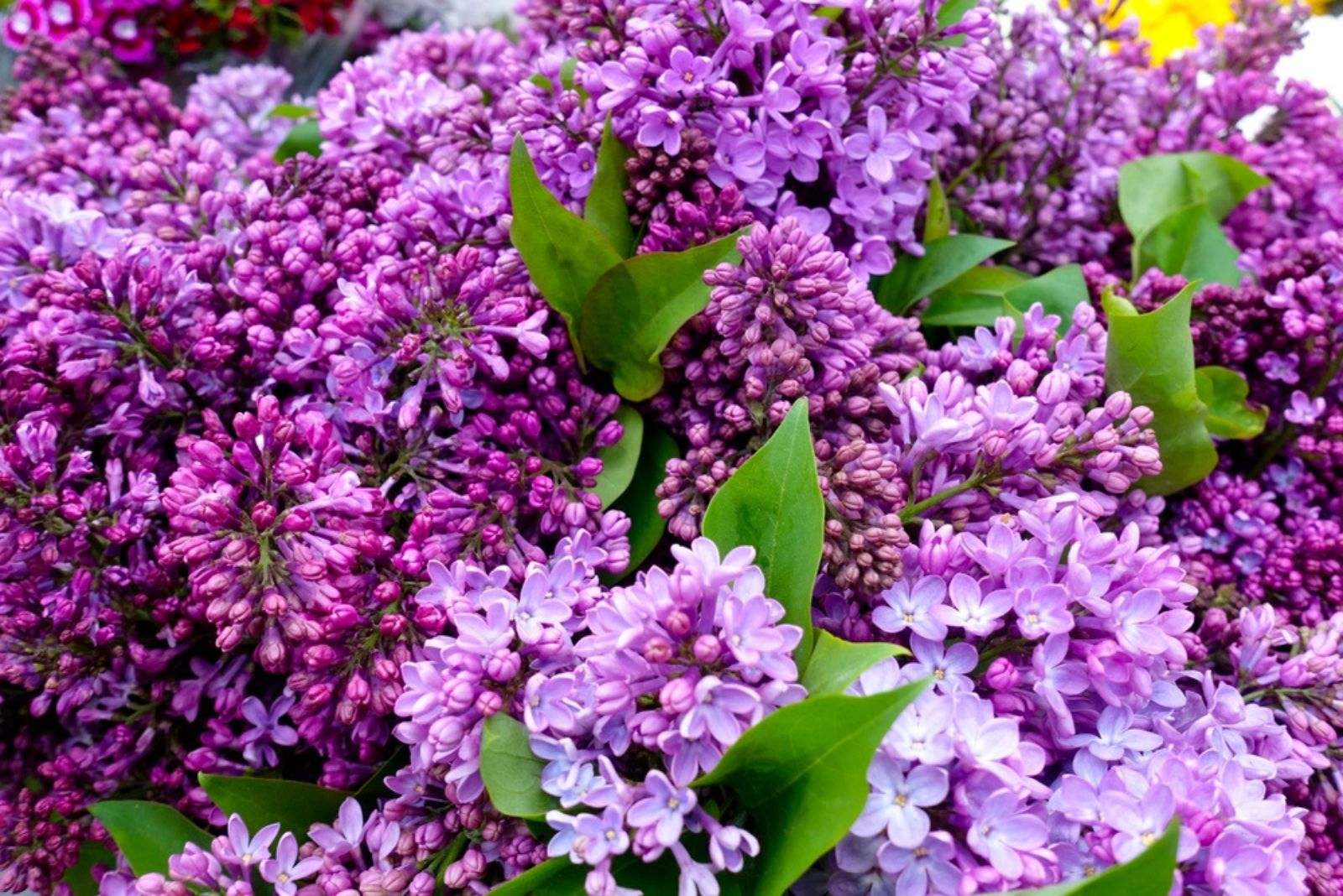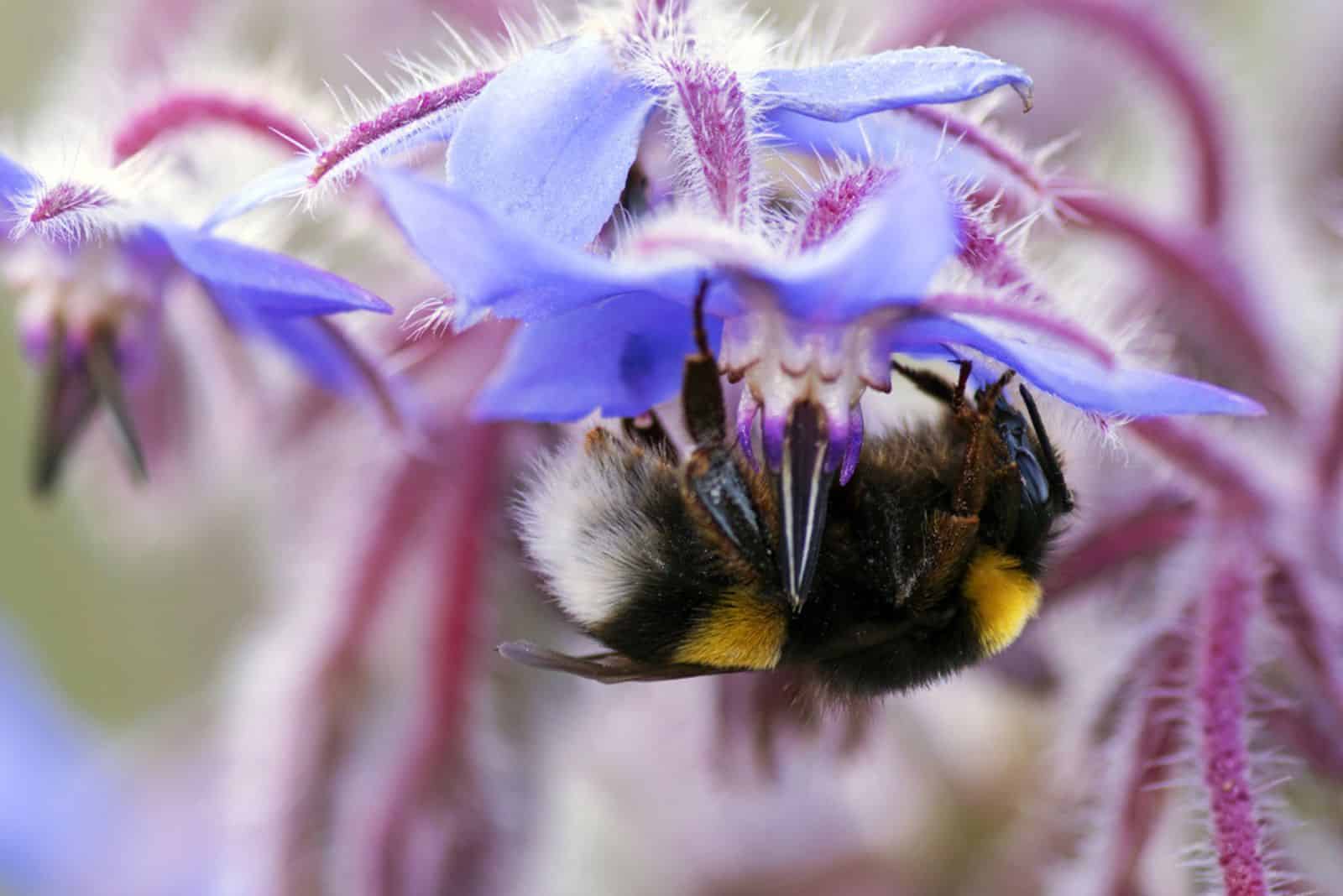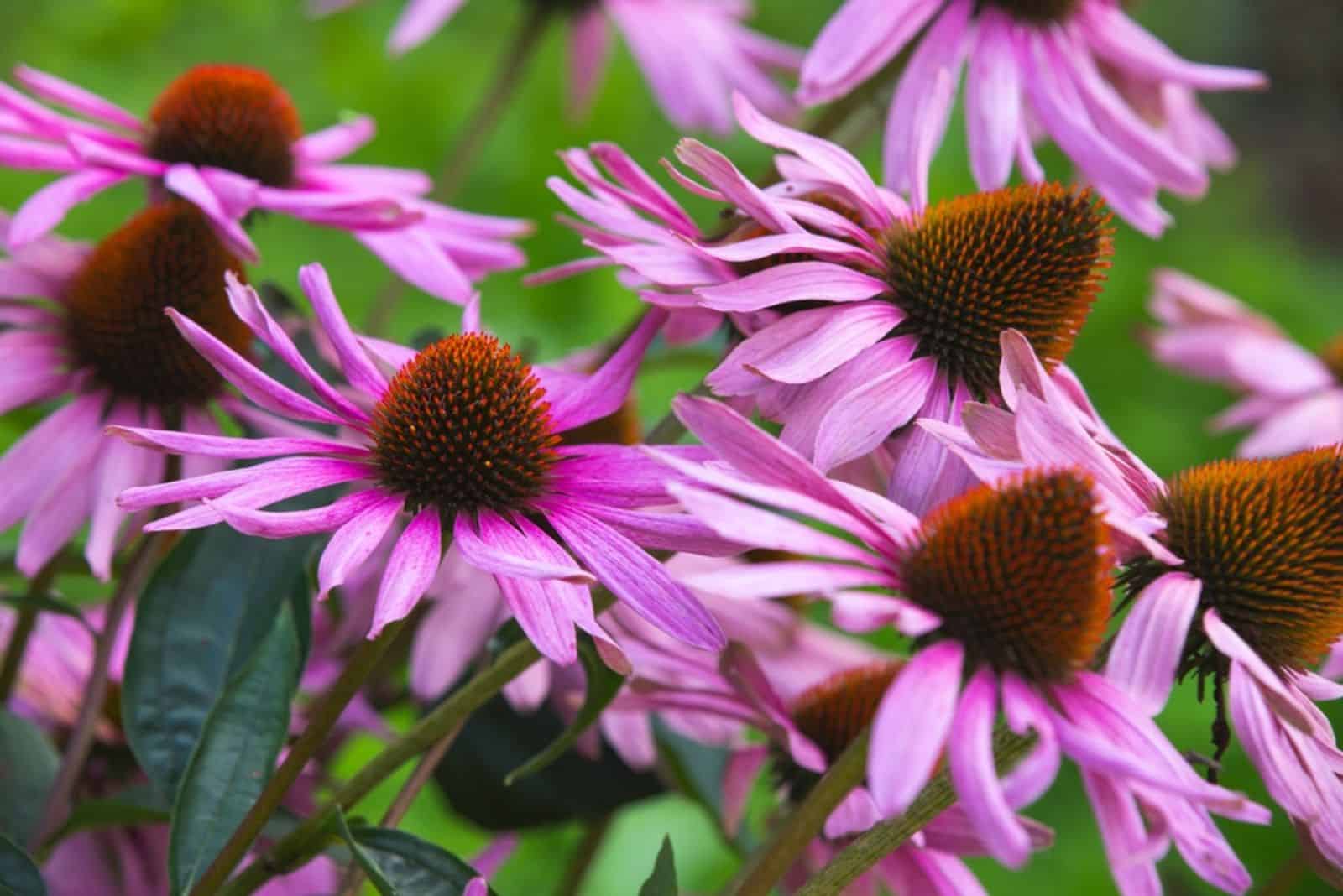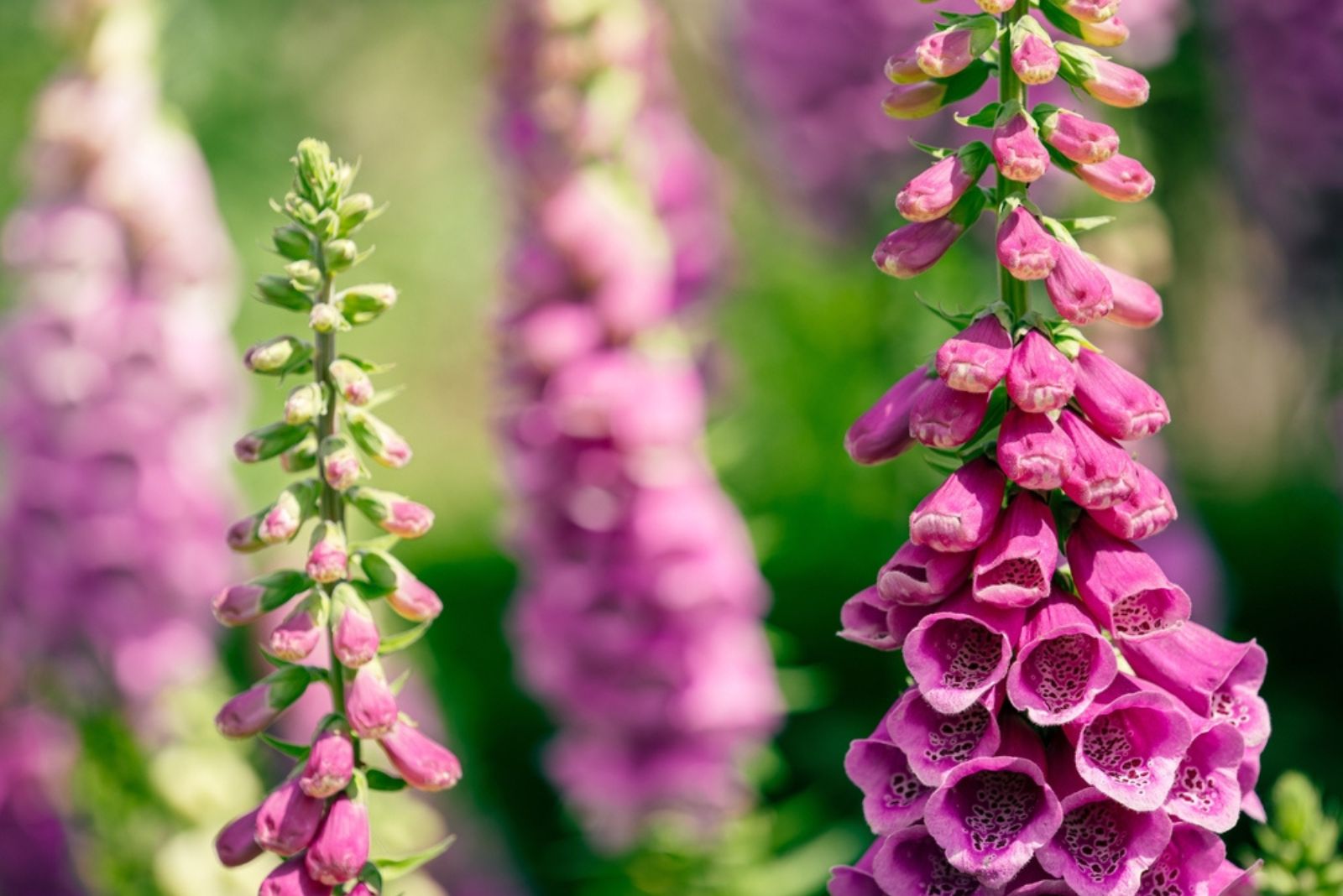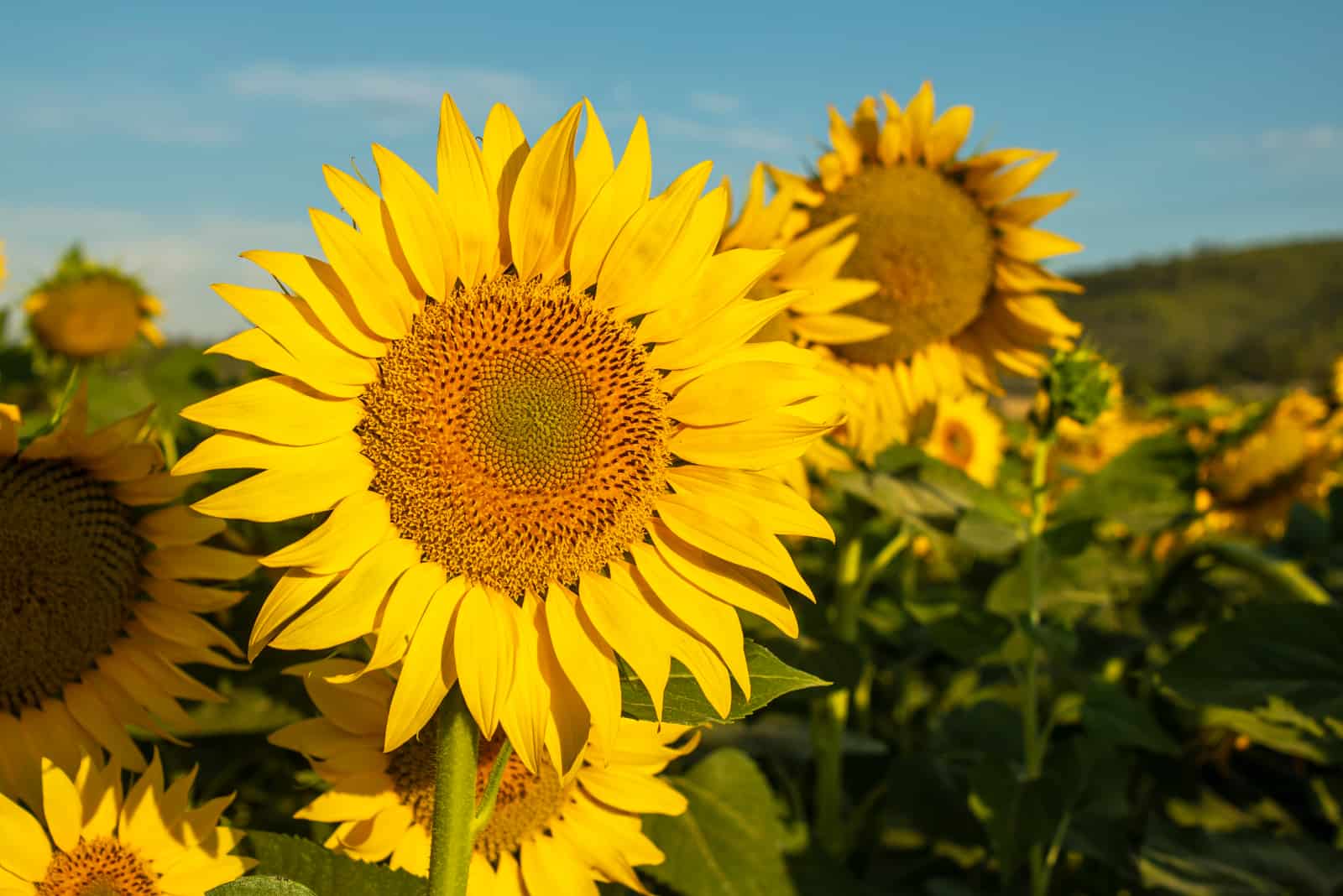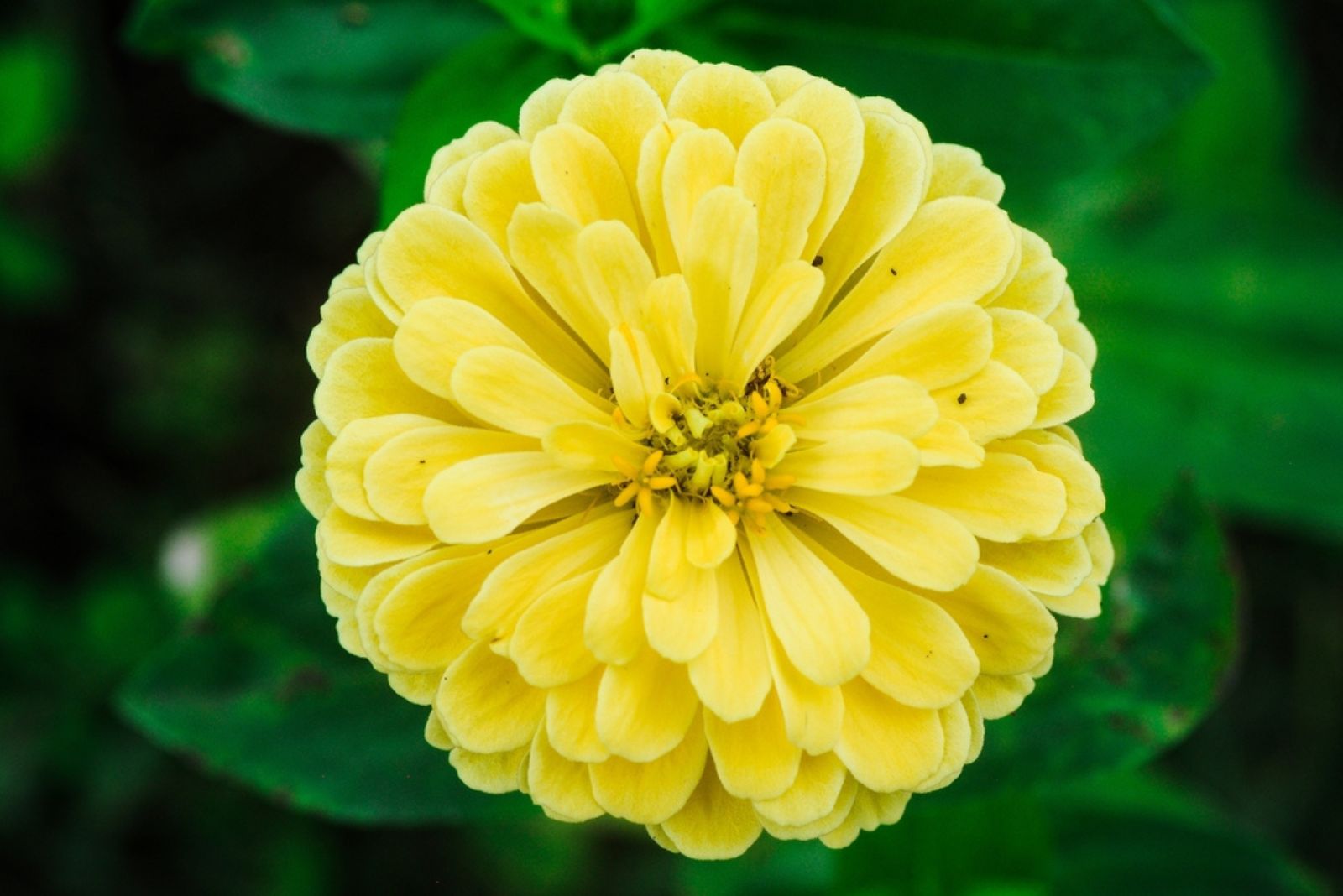Needless to say, we need bees! Apart from the ecosystem, every plant grower knows the importance of these adorable creatures for our gardens.
Even though it may seem hard to attract these pollinators to our outdoor space, the process is pretty simple.
All you need to do is grow one (or more) of these best flowers for bees. As an added bonus, you’ll get a spectacular color display and your garden will smell amazing!
Let’s get started!
How To Choose The Perfect Flower For Bees
Before you go to the nursery and purchase any seeds, you should know a couple of things.
Bees and flowers have a special relationship. The flowers provide nectar and pollen to bees and bees pay them back by pollinating the plants.
The first thing to check when choosing flowers for bees is native habitat. It’s always better to go with native plants because they and the local bee population have gone through the evolutionary process known as coevolution. (1)
Simply put, species in this process have developed abilities to help each other in many ways, such as pest and disease control.
Another benefit of native plants is that they’re adapted to your environment, which means they’ll require less care.
The second thing to pay attention to is to choose plants that blossom in different periods of the year. This way, bees will have a constant supply of food.
Finally, you should avoid using pesticides or any other products that contain chemicals. Bees and all other pollinators are very sensitive to chemicals and the last thing we want to do is harm them.
Here are the 10 best flowers that will attract these awesome creatures!
1. Salvia
What’s so special about salvias that makes bees love them? Interestingly, it’s about the flower colors. Bees see purple, violet, and blue, and the Salvia genus offers varieties in these hues.
Speaking of bee color preference, you shouldn’t plant red flowers because bees can’t see this hue.
Another benefit of gorgeous salvias is that there are varieties that have a long blooming season, from spring through fall.
Bees will have an abundance of nectar-rich salvia flowers for a long time, which means a lot of energy for pollination.
One of the best varieties to select is the scented Salvia guaranitica, whose blooming season lasts from June until November. Another benefit of this variety is that it thrives in containers, so you can still grow it even if you lack space for in-ground cultivation.
2. Bee Balm
I guess you all expected to see Bee balm on this list; I mean, everything is said in its name. Pollinators adore Monarda plants, due to their splendid hues.
The most popular Bee balms come in red, so if you need to attract bees, you should go with other varieties.
I recommend Balmy lilac with captivating lilac hues or Beauty of Cobham with purple blossoms.
These plants make amazing drought tolerant ground covers and their citrusy scented foliage only adds more value.
Bee balm has a long blooming season, which is great for bees and nectar but also for our garden displays.
3. Cosmos
This gorgeous old-fashioned flower is very popular in gardens nowadays. Beauty is just one of the reasons because cosmos is a true magnet for pollinators, it self-seeds, and has low care requirements.
Additionally, these plants bloom from July through October, and generate an abundance of captivating daisy-like flowers that come in many hues.
Don’t worry, cosmos don’t need a lot of space and they’re suitable for container gardening.
4. Lilac
The tiny brightly colored flowers of lilacs develop into clusters making a visual feast, but also a feast for pollinators.
Lilac has a sweet scent and it seems that bees simply adore it. No matter how far they are, bees will find their way to reach lilac blossoms.
These plants are tall and if you’re lucky enough to have one in your large garden, consider adding more plants that will attract bees, such as lavender and Bee balm. Apart from pollinators, you’ll also get a lovely scented garden.
5. Borage
Here comes a bee-friendly herb: borage. It’s prized for its spectacular star-shaped blossoms that are rich in nectar.
Bees love borage and it would be best if you planted this herb in an easily accessible spot.
Borage has many other benefits. They are self-seeding plants, which means you don’t have to replant them and the bees will have a constant supply of food.
Blue blossoms fit perfectly into almost every garden design. These plants are super-easy to maintain, so if you’re a beginner, I highly recommend growing borage.
6. Lavender
Her majesty, lavender! This would probably be the first flower any experienced grower recommends if asked about bee friendly plants.
The long blooming season, strong fragrance, and large amount of nectar are some of the reasons why these plants are perfect for bees.
If you want to plant lavender in the ground, I recommend varieties such as Hidcote and Munster.
For container gardening, Spanish lavender is the best choice. Tufty petals, heat tolerance, and low care requirements are just some of the amazing benefits of this lavender variety.
I love lavender, no matter if it’s grown indoors or outdoors. It’s one of the best plants to add to the place where you want to relax.
If you haven’t tried lavender honey yet, I highly recommend it because it’s not only delicious but also has an amazing fragrance!
7. Coneflower
When you look at the coneflower, you’ll notice that its daisy-like blossoms have a central cone and that’s exactly the reason why these plants attract bees.
These cones contain a lot of nectar and will ensure food for bees for months. Coneflowers come in various hues, such as purple, white, yellow, and pink. These colors combine perfectly with the dark central cone.
I highly recommend varieties such as Purple coneflower (Echinacea purpurea) and Pale purple coneflower (Echinacea pallida).
These wild coneflower types will draw many types of bees; honey bees, carpenter bees, and bumblebees, to name a few.
8. Foxglove
The captivating tubular blossoms of foxglove are frequently seen in cottage garden styles but they also make an excellent addition to pollinator gardens.
These plants generate blossoms in bright shades of pink and purple and we’ve seen that these are the colors bees see.
An interesting feature of foxglove flower petals is that they have spots and when bees are buzzing around the flower, they’ll land on these spots.
I recommend the lovely common foxglove known as the Lady’s glove or scientifically as Digitalis purpurea.
9. Sunflower
Sunflowers with their large blossoms are always welcome in our gardens, and I’m not just talking about their appearance.
They’re super easy to grow and most importantly, bees will frequently visit your garden and feed on their nectar.
Another benefit of these plants is that they generate large petals that can hold bees. I guess this makes the bee’s lunch way more pleasant.
10. Zinnia
We’ll finish our list with well-known zinnias. They are very popular in modern floral arrangements but you’ll find them in gardens worldwide.
One of the main reasons is that these magnificent plants attract pollinators, including bees. What makes zinnias special to bees is the flat shape of their blossoms. Bees can easily access nectar so they’ll keep coming back.
Taller zinnias, such as elegans series, are more suitable for in-ground cultivation, whereas shorter varieties, such as Magellan are better suited for pots.
Zinnias will adorn your garden from spring to fall, making them the perfect choice for different designs and pollinator gardens. You can combine them with other pollinator-friendly plants or grow some zinnia companions for even more benefits.
As you can see, attracting bees to our gardens isn’t rocket science. Simply choose the plant variety native to your region and enjoy the buzzing of bees all season long!
References
1. Kareiva, P. (1999). Coevolutionary arms races: Is victory possible? Proceedings of the National Academy of Sciences of the United States of America

